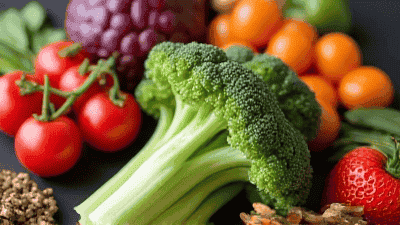
Chronic pain affects millions of people worldwide, significantly impacting their quality of life. Conditions such as arthritis, fibromyalgia, back pain, and migraines can be debilitating. While medical treatments and physical therapy are commonly employed to manage pain, diet is an often-overlooked factor that can play a crucial role in alleviating discomfort and enhancing overall health.
Chronic pain is defined as pain that persists for longer than three months, often lasting for years. Unlike acute pain, which serves as a warning sign of injury or illness, chronic pain can occur without a clear reason and may be associated with various medical conditions. Its multifaceted nature makes it a complex issue to manage, necessitating a comprehensive approach that includes medical interventions, lifestyle modifications, and dietary changes.
Chronic pain can arise from many conditions, including but not limited to:
Emerging research has shown that certain dietary choices can impact inflammation and pain levels in the body. The foods we eat can either promote inflammation, exacerbating pain, or reduce inflammation, providing relief. Understanding these connections can empower individuals to make informed dietary choices to help manage their chronic pain.

Inflammation is a natural response of the immune system to injury or infection. However, in chronic pain conditions, inflammation can become prolonged, contributing to pain and discomfort. Certain foods have been found to increase inflammation, while others can help reduce it.
Incorporating specific nutrients into the diet can be beneficial for managing chronic pain:
Creating an effective dietary strategy to manage chronic pain involves understanding how to incorporate anti-inflammatory foods while avoiding those that may exacerbate pain. Here’s a step-by-step approach to crafting an anti-inflammatory diet plan:
Begin by keeping a food diary for a week. Record everything you eat and any pain symptoms you may experience. This will help identify patterns between your diet and pain levels.
After tracking your food intake, analyze your journal to identify any foods that seem to correlate with increased pain. Consider eliminating or reducing these items from your diet.
Start incorporating anti-inflammatory foods into your meals. Focus on colorful fruits and vegetables, healthy fats, whole grains, and lean proteins. Gradually replace inflammatory foods with healthier options.
Aim for balanced meals that include:
Hydration is crucial for overall health and can aid in the management of pain. Aim to drink at least eight cups of water daily, and consider herbal teas with anti-inflammatory properties, such as ginger or turmeric tea.
Practice mindful eating by paying attention to your food choices and recognizing hunger and fullness cues. This practice can help you make healthier choices and improve your relationship with food.

Incorporating delicious, anti-inflammatory recipes into your diet can make the process enjoyable and sustainable. Here are some easy-to-prepare recipes to support pain management:
This nutrient-packed smoothie combines ingredients rich in antioxidants and anti-inflammatory compounds.
This dish incorporates omega-3 fatty acids from salmon and fiber from quinoa and vegetables.
This hearty and warming soup is easy to make and packed with nutrients.
This delicious dessert is rich in antioxidants and fiber.
This vibrant salad is full of flavor and packed with anti-inflammatory ingredients.
In addition to dietary adjustments, several lifestyle factors can play a crucial role in managing chronic pain:
Engaging in regular physical activity can help improve flexibility, strength, and overall well-being. Low-impact exercises such as walking, swimming, and yoga can be particularly beneficial for managing chronic pain.
Chronic stress can worsen pain perception. Practicing stress-reduction techniques such as meditation, yoga, deep breathing exercises, or mindfulness can help alleviate pain and improve quality of life.
Sleep is essential for healing and recovery. Poor sleep can exacerbate pain, so creating a relaxing bedtime routine and ensuring good sleep hygiene is crucial.
Smoking can negatively impact circulation and overall health, potentially worsening chronic pain. Quitting smoking can lead to significant improvements in general health.
Connecting with support groups or speaking to a therapist can be beneficial for managing the emotional aspects of chronic pain. Sharing experiences and coping strategies can be valuable in your journey.

As you adopt dietary changes and lifestyle modifications, it is essential to monitor your progress. Keep a journal to track your pain levels, dietary choices, and any changes in symptoms. This practice can help you identify effective strategies and make necessary adjustments over time.
Before making significant changes to your diet or exercise routine, consult a healthcare professional or a registered dietitian. They can provide personalized guidance tailored to your specific needs and health conditions.
Managing chronic pain through diet is both a practical and empowering approach to improving quality of life. By understanding the connection between food, inflammation, and pain, individuals can make informed dietary choices that support their healing journey. Incorporating anti-inflammatory foods, staying hydrated, engaging in regular physical activity, and adopting a holistic approach to health can significantly enhance pain management.
Remember, everyone’s experience with chronic pain is unique, and it may take time to find the right dietary changes and lifestyle strategies that work for you. Be patient with yourself and stay committed to optimizing your health through nourishing foods and mindful practices. Together, we can navigate the path toward a healthier, more pain-free life.